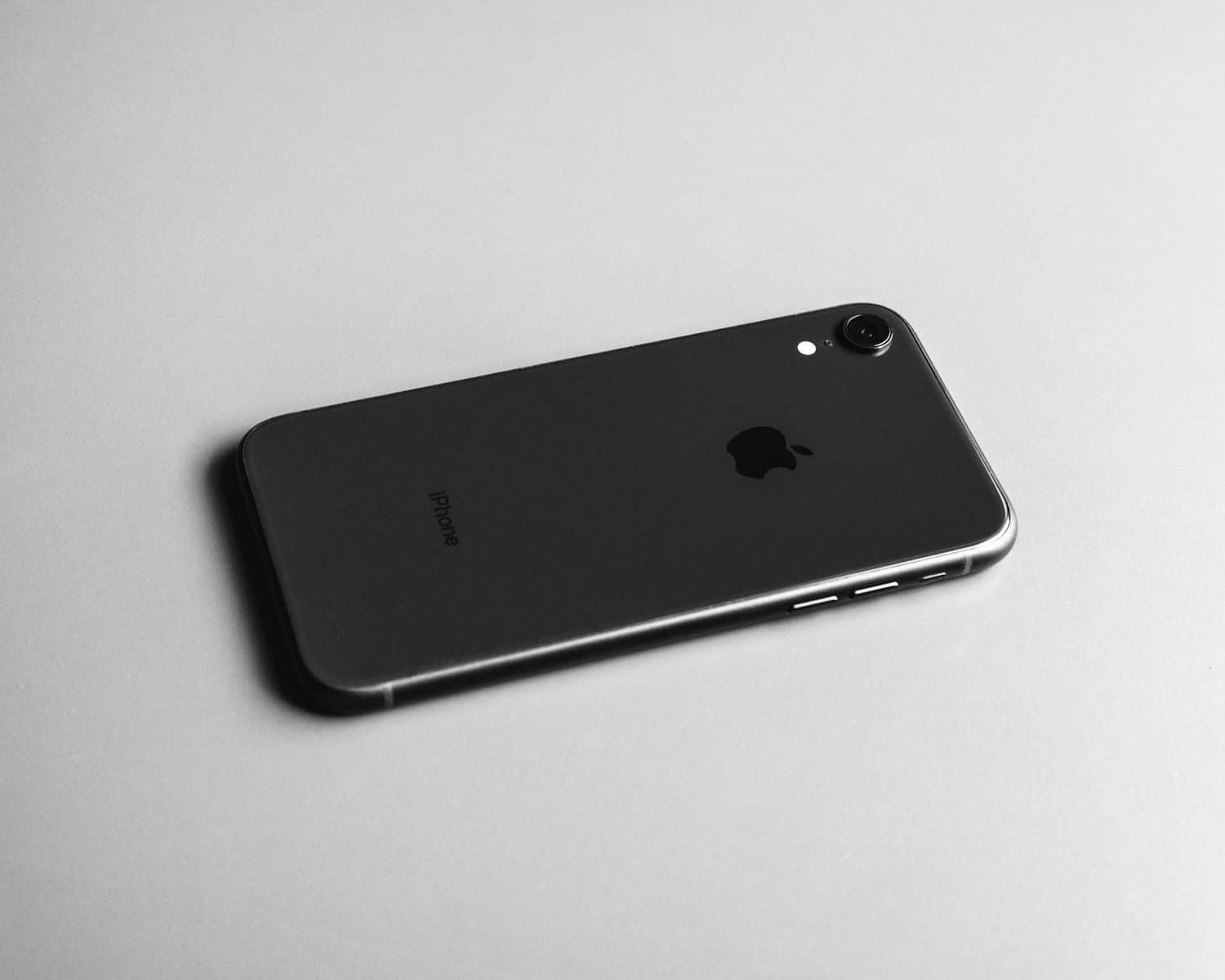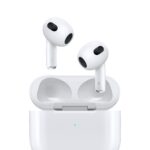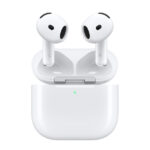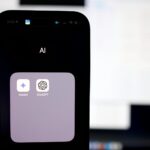Accessing external drives on your iPhone or iPad opens up a world of possibilities, from expanding storage to easily transferring files between devices. With the right adapter and a few simple steps, you can seamlessly integrate your external drive into your iOS workflow.
Connecting Your Drive to a Wider World

Image Credit: Amazon
What You’ll Need
- An external drive: This can be a USB flash drive, an SD card, or even a full-sized external hard drive.
- The right adapter: Depending on your iPhone or iPad model, you’ll need a specific adapter to connect your external drive. Common adapters include the Lightning to USB Camera Adapter, Lightning to USB 3 Camera Adapter, or USB-C to SD Card Camera Reader.
Connecting the Drive
- Plug the adapter into your iPhone or iPad. Make sure it’s securely connected.
- Connect your external drive to the adapter. Again, ensure a secure connection.
- Open the Files app. You should see your external drive listed under “Locations.”
Using Your External Drive
- Browsing files: Tap on your external drive to see its contents. You can browse folders, open files, and even play media directly from the drive.
- Transferring files: You can easily move files between your iPhone or iPad and the external drive using the Files app. Simply drag and drop files to copy or move them.
- Formatting: If your external drive isn’t formatted correctly, you can use a computer to reformat it to a compatible format like exFAT or FAT32.
| Drive Type | Adapter Needed | Notes |
|---|---|---|
| USB flash drive | Lightning to USB Camera Adapter or Lightning to USB 3 Camera Adapter | The Lightning to USB 3 Camera Adapter offers faster transfer speeds. |
| SD card | Lightning to SD Card Camera Reader or USB-C to SD Card Camera Reader | The USB-C to SD Card Camera Reader is only compatible with iPads that have a USB-C port. |
| External hard drive | Lightning to USB 3 Camera Adapter | You may need a powered USB hub if your external hard drive doesn’t have its own power source. |
How to Access an External Drive on iPhone or iPad
| Step | Description | Notes |
|---|---|---|
| 1. Connect the external drive: | * Use a compatible adapter: You’ll need an adapter like the Lightning to USB Camera Adapter or USB-C to SD Card Camera Reader depending on your device and drive type. * Ensure proper power: Some external drives require external power, especially when used with iPhones. | * Not all adapters are created equal. Choose one from Apple or a reputable brand for reliability. |
| 2. Insert the SD card (if applicable): | If using an SD card reader, insert the card into the designated slot. | * Ensure the card is formatted in a compatible format like exFAT, FAT32, or APFS. |
| 3. Open the Files app: | This is the default app for managing files on your iPhone or iPad. | |
| 4. Locate the external drive: | * Look under “Locations” in the sidebar. * The drive name might appear directly or within a folder named after the adapter type. | * If you don’t see the drive, ensure it’s properly connected and formatted. |
| 5. Browse and access files: | Tap on the drive name to see its contents. You can then: * View photos and videos directly in the Photos app. * Open supported documents in compatible apps. * Copy, move, or delete files as needed. | * Not all file types are supported on iOS/iPadOS. |
Additional notes:
- Limited functionality: While you can access files, you might not be able to edit them directly on the device due to app limitations.
- Security: Be cautious when connecting external drives, especially those from unknown sources, to protect your device from malware.
- Alternatives: Consider cloud storage services for broader accessibility and file management across devices.
Introduction to iPhone and iPad External Storage
Connecting external storage devices to an iPhone or iPad enhances the device’s storage capabilities. In many situations, users find the built-in storage of their iOS devices insufficient for their needs. That’s where external storage comes into play. Whether it’s an external drive or hard drive, these storage devices offer a convenient way to carry more files and make them accessible on the go.
Compatibility: Most recent iOS devices support external storage, allowing users to plug in various storage devices. This feature requires a device running iOS 13 or later. Users typically connect these devices using a Lightning to USB adapter, USB-C port, or directly if using a drive designed for iOS.
Usage: Once connected, access to the external storage is seamlessly integrated through the Files app on the device. Users can view contents, open files, and transfer them between the external storage and the device’s internal storage.
File Management: iPhones and iPads allow you to organize your files with folders, and tag them with colors or names for easy identification. The process is straightforward:
- Connect your external storage to the device.
- Navigate to the Files app on your device.
- Locate the external device under ‘Locations’.
Limitations to consider:
- Not all file formats may be supported.
- There are power constraints with some external hard drives.
In essence, using external storage with iPhones and iPads offers a practical solution for managing and transferring large numbers of files or large-sized media, such as high-resolution videos and comprehensive documents. It’s a straightforward process that extends the utility of your device.
Hardware Requirements
To use an external drive with an iPhone or iPad, it’s crucial to have the proper connection gear. This means understanding the type of port on your device and selecting the right adapter or cable.
Identifying Your Device’s Port
Modern iPhones and iPads come with one of two types of ports. Here’s how to tell which one you have:
- Lightning port: Found on older models, it’s small and narrow.
- USB-C port: Newer devices, like the iPad Pro, use this oval-shaped port.
By determining the type of port your device has, you can ensure you choose the right hardware for the task at hand.
Choosing the Right Adapter
With your device’s port type known, pick a suitable adapter:
- For a Lightning port: You’ll typically need a Lightning to USB Camera Adapter or a Lightning to USB 3 Camera Adapter.
- For a USB-C port: A USB-C to USB Adapter is the correct choice.
These adapters transform your device’s port into a usable USB-A slot, which is what most external drives connect to. Make sure the adapter you choose is compatible with your specific iPhone or iPad to avoid any connection issues.
Software Compatibility
Seamless access to external drives on your iPhone or iPad hinges on ensuring that the device’s software is compatible with external storage requirements. Knowing which operating systems and file formats work is crucial.
Understanding iOS and iPadOS Support
The ability to connect to external storage devices was introduced with the release of iOS 13 and iPadOS 13. Devices running these versions or later, such as iOS 14 or iPadOS 14, support this functionality. Users can manage their files using the Files app, which provides a direct interface to browse and organize documents just as they would on a Mac or other computer.
File System Formats and Their Importance
External storage devices must be formatted with a file system that iOS and iPadOS recognize. The most compatible file system formats include:
- FAT32: A common format that is widely compatible but has a file size limit of 4GB, which can be restrictive for larger files.
- exFAT: Ideal for flash drives, it supports larger file sizes, making it more suitable for high-definition media files.
- HFS+: Mostly used in Macs, this file system can be read by iOS and iPadOS but has limitations when it comes to sharing with non-Apple devices.
- APFS: Apple’s proprietary file system that offers robustness and efficiency, especially for SSDs and flash drives.
For the best experience, a user should ensure that their external storage device is formatted with a file system that matches their usage needs and provides the best interoperability with their Apple devices.
File Management on iOS Devices
Managing files on iOS devices such as iPhones and iPads is straightforward, thanks to the built-in Files app. It provides a user-friendly interface where you can view, organize, and work with your documents, images, and media seamlessly.
Using the Files App
The Files app serves as a central hub for all the files and folders on your iOS device. To begin, simply tap the Files app icon on your home screen. Once inside, you’ll find various locations including “On My iPhone” or “On My iPad,” “iCloud Drive,” and lately accessed folders like “Recents.” If you have an external drive connected, it will also show up here.
To handle your files, use these tips:
- Browse: Use the “Browse” tab at the bottom to navigate through folders and find the files you need.
- View: Select files to view documents or preview media such as images and videos.
Transferring and Organizing Files
Transferring files between folders or locations is a breeze with the drag-and-drop feature. Here’s how to stay organized:
- Moving Files: Simply press and hold a file, then drag it to the desired folder.
- Copying Files: If you wish to copy a file, tap and hold the file, choose “Copy,” then go to the target location and press “Paste.”
This makes organizing your pictures, videos, and documents efficient. Remember, keeping your files structured helps you find them faster when you need them.
Connecting and Using External Drives
Connecting your iPhone or iPad to external storage devices like USB drives and external hard drives brings more space to store your photos, videos, and files. It’s a straightforward process if you’ve got the right tools.
Step-by-Step Connection Guide
To hook up a USB drive or external hard drive to your iPhone or iPad, you’ll need either a Lightning to USB 3 Camera Adapter or a Lightning to SD Card Camera Reader for SD cards. Follow these steps:
- Ensure your iPhone or iPad is running iOS 13 or later.
- Connect your external drive, flash drive, or thumb drive directly to the adapter.
- Plug the adapter into the charging port on your device.
- Wait a moment for your device to recognize the external storage.
If you’re using a hub, ensure it’s powered, as some external drives need more power than your iOS device can provide on its own.
Accessing and Browsing Files
Once your drive is connected, you can start managing your files:
- Open the Files app on your iPhone or iPad.
- Look under the “Locations” section to find your connected storage device.
- Tap on your device to see all the files and folders stored on your external drive.
You can now view, edit, and move files freely between the external drive and your device’s local storage or cloud services. Remember, handling larger files may take a bit longer depending on the drive’s and device’s speed.
Power and Storage Considerations
When connecting an external drive to your iPhone or iPad, it’s important to consider the power it requires and how you’ll manage the storage space. Let’s tackle these two key areas to ensure that everything runs smoothly.
Understanding Power Requirements
External drives often need more power than what your iOS device can supply. USB power adapters can provide the extra juice required for your drive to function properly. For example, you might need an adapter capable of delivering more power for a solid-state drive to work with your iPhone or iPad. Always check the drive’s specifications to make sure you’re meeting its power requirements.
Managing Storage Space Efficiently
Effective storage space management on your iPhone or iPad means keeping only the essentials. Regularly free up space by removing files you no longer need. For optimal use of an external drive, consider transferring photos, videos, and other large files off your device to clear up space. With a solid-state drive, you can store large quantities of data without worrying about moving parts slowing down the process or wearing out over time. Keep an eye on available storage in the iOS ‘Settings’ to ensure your device keeps running without hiccups.
Advanced Usage and Tips
When you get the hang of using an external drive with your iPhone or iPad, these advanced tips can make the experience even smoother and more powerful.
Third-Party Apps and Expansion
Third-party apps can significantly enhance how you interact with external drives. These apps offer robust file management and may support additional formats that the default Files app might not handle as well. Apps like Documents by Readdle improve workflow by providing advanced file management features for power users such as integrated ZIP compression and media playback. Users looking to connect to SMB servers will find that certain apps provide a more seamless connection and extended workplace accessibility.
- Recommended Third-Party Apps:
- Documents by Readdle
- FileExplorer
- GoodReader
Using a USB-C to SD card camera reader or other compatible adapters, users can quickly transfer large amounts of data without relying solely on cloud services. This is particularly useful for photographers and videographers who need to review and manage high-resolution files on the go.
Troubleshooting Common Issues
Troubleshooting is essential for dealing with common problems that can arise.
- Not Recognizing the Drive: If your device does not recognize the external drive, first ensure that the drive is properly formatted (FAT32 or exFAT are typically safe choices). If it is, then disconnect and reconnect the drive, and restart your device if necessary.
- File Transfer Errors: When moving files, if an error occurs, check for sufficient storage on the receiving end and verify that the file is not corrupt.
- Power Requirements: Remember, some USB drives may need an external power source. If a drive isn’t working, check whether it requires additional power.
It’s beneficial to read through the comments or forums related to your specific adapter or drive, as they can offer solutions tailored to your situation. Keep your iOS up to date since each update can have improvements and bug fixes that might solve your issue.
By integrating these advanced practices and approaches, users will find working with external storage on their iPhone or iPad to be a more efficient and pleasant experience.
Ensuring Compatibility and Performance
When connecting an external drive to an iPhone or iPad, checking compatibility is a key step. Each device must have iOS 13 or a more recent version to support external storage. For newer models, such as the iPad Pro or iPhones with USB-C ports, you can plug USB-C drives directly. However, older models with Lightning ports will require an adapter.
Adapters and connectors to consider:
- Lightning to USB Camera Adapter
- Lightning to USB 3 Camera Adapter
- USB-C to SD Card Camera Reader
- Lightning to SD Card Camera Reader
Performance hinges on the quality of these adapters, so choosing an Apple-certified product guarantees smooth functioning. It’s also wise to ensure your storage device is formatted correctly, as Apple devices typically read FAT32 or exFAT formats.
On the topic of performance, one must use files compatible with the iOS file system to avoid issues while accessing or transferring data. If your iPhone or iPad is sluggish when using an external drive, consider the following:
- Use drives that meet Apple’s power specifications.
- Avoid using multiple resource-intensive apps while transferring files.
- Keep your iOS current with the latest updates for optimal performance.
Appropriate pairing between the drive and your Apple device not only ensures the safety of your data but also provides an efficient workflow, whether you’re moving photos to your MacBook or music to your Apple Watch.
Security and Backup Strategies
When one connects an external drive to their iPhone or iPad, keeping data secure is crucial. It’s important to follow strategies that ensure files remain private and safe from unauthorized access. Security on external drives can often be enhanced by enabling encryption or using drives that require passwords for access.
For backup, users can utilize iCloud for their iPhones and iPads as a secure storage solution. Photos and documents can be backed up automatically to iCloud, providing an effective safeguard against data loss. Here’s how one can make the most out of iCloud in their backup routines:
- Photos: Enable iCloud Photos to automatically upload and store all your photos and videos in iCloud.
- iCloud Drive: Turn on iCloud Drive to keep all your files up to date across all your devices.
When using external drives formatted with the NTFS file system, it’s important to note that iPhones and iPads might have limited accessibility. These devices are traditionally formatted with a different file system that’s more compatible with iOS. Therefore, users may need additional software to read or write to NTFS-formatted drives.
To summarize, employ encryption where possible, use iCloud’s seamless backup features for protecting photos and documents, and be mindful of file system compatibility with NTFS drives. These strategies can help maintain both security and data integrity.
Frequently Asked Questions
This section offers precise answers to some of the common questions you may have about using external drives with your iPhone or iPad.
How do I access files on an external hard drive through my iPhone?
To see files on an external hard drive with your iPhone, plug the drive into the appropriate port, open the Files app, and the drive should be listed under ‘Locations.’
What are the steps to connect a flash drive to my iPad Pro?
For connecting a flash drive to an iPad Pro, use a compatible adapter to link the flash drive to the USB-C port. The device should appear in the Files app under ‘Locations.’
Why doesn’t my iPad recognize an external storage device when connected?
Your iPad might not recognize an external storage device if it’s not formatted correctly, uses more power than the iPad can provide, or if there is a faulty connection. Ensure the drive is formatted to a system compatible with iOS, such as FAT32, and that connections are secure.
Can I use a 1TB external storage device with my iPhone?
Yes, you can use a 1TB external storage device with your iPhone as long as the drive’s format is compatible with iOS, and you have the necessary adapters to connect it to your iPhone.
How to connect a USB-C external hard drive to an iPad Pro?
Connect a USB-C external hard drive directly to the iPad Pro’s USB-C port. The drive should be powered on and properly formatted for the iPad to recognize it.
What is the best way to use external storage with an iPhone 13?
The best way to use external storage with an iPhone 13 is to ensure the external drive is compatible and formatted for iOS, then connect it with a Lightning to USB adapter. Once connected, manage your files via the Files app.







